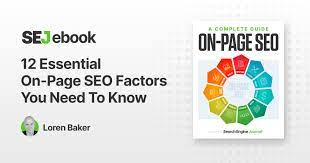
Mastering On-Site SEO: Strategies for Website Success
The Importance of On-Site SEO for Your Website
When it comes to improving your website’s visibility and ranking on search engines, on-site SEO plays a crucial role. On-site SEO, also known as on-page SEO, involves optimising various elements on your website to make it more search engine friendly and user-friendly. Here are some key aspects of on-site SEO that you should pay attention to:
Keyword Optimisation
Keywords are the foundation of on-site SEO. By conducting thorough keyword research and strategically placing relevant keywords throughout your website’s content, meta tags, headings, and URLs, you can signal to search engines what your website is about and improve its chances of ranking for those keywords.
Quality Content
High-quality, relevant, and engaging content is essential for both users and search engines. By creating original and informative content that addresses the needs and interests of your target audience, you can attract more visitors to your site and increase the likelihood of earning valuable backlinks from other websites.
Meta Tags Optimisation
Title tags, meta descriptions, and meta keywords are important meta tags that provide information about your web pages to search engines. By optimising these meta tags with relevant keywords and compelling descriptions, you can improve click-through rates from search engine results pages (SERPs) and enhance your site’s overall visibility.
Internal Linking
Internal linking helps search engines understand the structure of your website and the relationship between different pages. By strategically linking related pages within your site using descriptive anchor text, you can improve user navigation, distribute link equity throughout your site, and boost the authority of important pages.
Mobile-Friendliness
In today’s mobile-first world, having a responsive and mobile-friendly website is crucial for both user experience and SEO. Ensure that your website is optimised for mobile devices by using responsive design techniques that adapt to different screen sizes and provide a seamless browsing experience across all devices.
Page Speed Optimisation
The loading speed of your web pages directly impacts user experience and search engine rankings. Optimise your website’s performance by minimising server response times, compressing images, leveraging browser caching, and eliminating unnecessary code to deliver fast-loading pages that keep visitors engaged.
By focusing on these key aspects of on-site SEO, you can enhance the visibility, usability, and performance of your website in search engine results. Remember that effective on-site SEO requires ongoing monitoring, analysis, and refinement to stay ahead of algorithm updates and maintain a competitive edge in the digital landscape.
Top 8 FAQs About On-Site SEO: Essential Insights and Best Practices
- What is on-site SEO?
- Why is on-site SEO important for my website?
- How can I improve keyword optimisation for on-site SEO?
- What role does quality content play in on-site SEO?
- How do meta tags impact on-site SEO?
- Why is internal linking important for on-site SEO?
- What are the best practices for ensuring mobile-friendliness in on-site SEO?
- How can I optimise page speed for better on-site SEO performance?
What is on-site SEO?
On-site SEO, also known as on-page SEO, refers to the practice of optimising various elements within a website to improve its visibility and ranking on search engine results pages. This includes strategies such as keyword optimisation, creating high-quality content, optimising meta tags, internal linking, ensuring mobile-friendliness, and improving page speed. By focusing on on-site SEO techniques, website owners can enhance their site’s relevance to search engines, attract more organic traffic, and provide a better user experience for visitors. It is an essential aspect of digital marketing that plays a significant role in determining a website’s online success.
Why is on-site SEO important for my website?
On-site SEO is crucial for your website’s success because it directly impacts how search engines interpret and rank your site’s content. By implementing on-site SEO best practices such as keyword optimisation, quality content creation, meta tags optimisation, internal linking, mobile-friendliness, and page speed optimisation, you can improve your website’s visibility in search engine results pages (SERPs) and attract more organic traffic. A well-optimised website not only enhances user experience but also signals to search engines that your site is relevant and authoritative in its niche. Ultimately, investing in on-site SEO helps you establish a strong online presence, reach your target audience effectively, and stay competitive in the digital landscape.
How can I improve keyword optimisation for on-site SEO?
To improve keyword optimisation for on-site SEO, start by conducting thorough keyword research to identify relevant and high-traffic keywords related to your website’s content. Once you have selected target keywords, strategically incorporate them into your website’s meta tags, headings, URLs, and content while maintaining a natural and user-friendly flow. Avoid keyword stuffing and focus on creating valuable and informative content that resonates with your target audience. Regularly monitor keyword performance using analytics tools and make adjustments as needed to ensure optimal visibility and ranking on search engine results pages.
What role does quality content play in on-site SEO?
Quality content plays a fundamental role in on-site SEO by serving as the cornerstone of a successful digital marketing strategy. Search engines value websites that provide valuable, relevant, and engaging content to users. By creating high-quality content that incorporates targeted keywords, answers user queries, and addresses their needs, websites can attract more organic traffic, earn backlinks from authoritative sources, and improve their search engine rankings. Quality content not only enhances user experience but also signals to search engines that a website is a credible and trustworthy source of information, ultimately contributing to better visibility and performance in search results.
How do meta tags impact on-site SEO?
Meta tags play a crucial role in on-site SEO by providing search engines with valuable information about the content and relevance of a web page. Title tags, meta descriptions, and meta keywords are key meta tags that influence how search engines interpret and display a website in search results. Optimising these meta tags with relevant keywords, compelling descriptions, and accurate information can improve click-through rates, enhance user engagement, and increase the likelihood of ranking higher in search engine results pages (SERPs). By strategically crafting meta tags that align with the content and intent of a web page, website owners can effectively communicate their offerings to both search engines and users, ultimately boosting their site’s visibility and organic traffic.
Why is internal linking important for on-site SEO?
Internal linking is crucial for on-site SEO as it helps search engines understand the structure and hierarchy of your website, while also guiding users to relevant content within your site. By strategically linking related pages using descriptive anchor text, you can establish a contextual relationship between different pages, distribute link equity throughout your site, and enhance the overall user experience. Internal linking not only improves website navigation and accessibility but also boosts the authority of important pages, ultimately contributing to better search engine rankings and increased organic traffic.
What are the best practices for ensuring mobile-friendliness in on-site SEO?
Ensuring mobile-friendliness is a critical aspect of on-site SEO to cater to the increasing number of users accessing websites on mobile devices. The best practices for achieving mobile-friendliness include implementing responsive web design to ensure that your site adapts seamlessly to different screen sizes and resolutions. Optimising page loading speed for mobile users is also essential, as faster loading times improve user experience and positively impact search engine rankings. Additionally, prioritising easy navigation, clear call-to-action buttons, and legible font sizes on mobile devices can enhance usability and engagement. By following these best practices, you can create a mobile-friendly website that not only satisfies users but also meets the criteria set by search engines for improved visibility and ranking.
How can I optimise page speed for better on-site SEO performance?
Optimising page speed is crucial for improving on-site SEO performance. To enhance your website’s loading speed, consider implementing strategies such as minimising server response times, compressing images without compromising quality, leveraging browser caching to store static resources locally, and eliminating unnecessary code that may slow down page rendering. Additionally, using a content delivery network (CDN) can help distribute your website’s content across multiple servers worldwide, reducing latency and improving loading times for users across different geographical locations. By prioritising page speed optimisation, you can provide a seamless browsing experience for visitors and signal to search engines that your site is fast, reliable, and user-friendly – all of which are key factors in boosting your SEO rankings.

